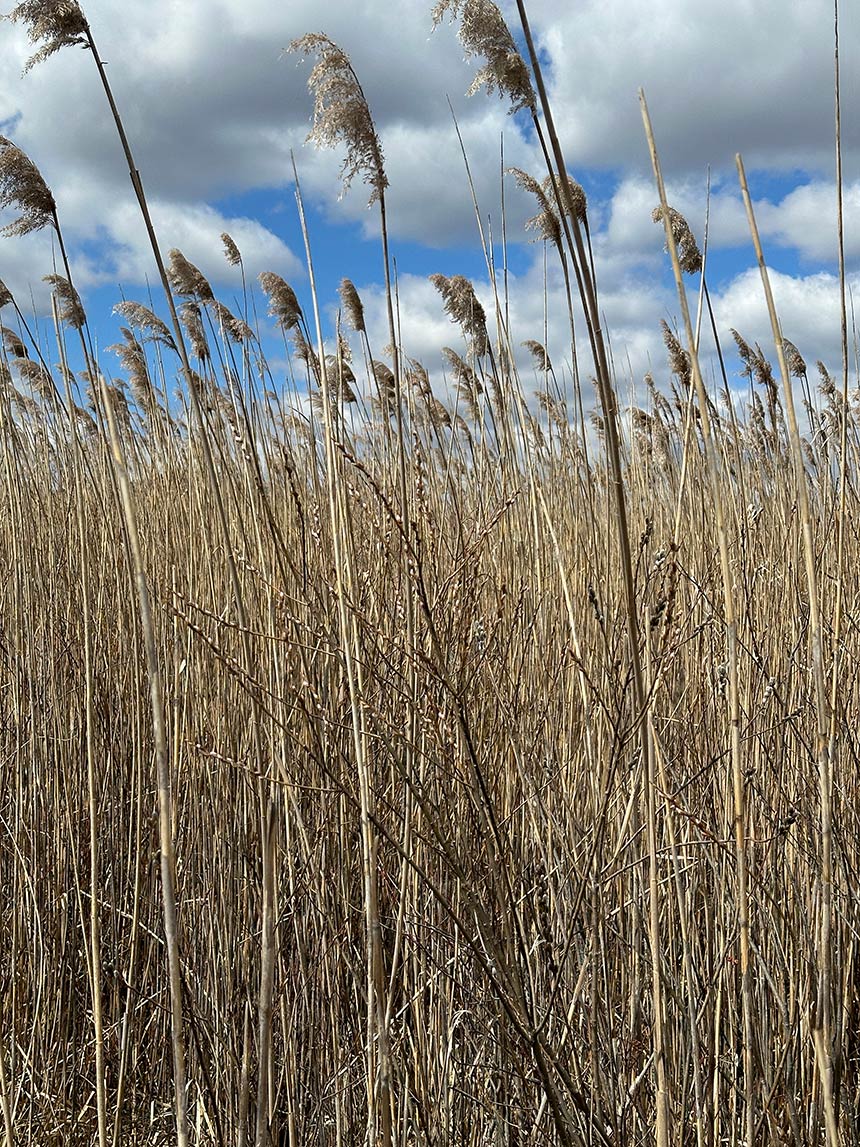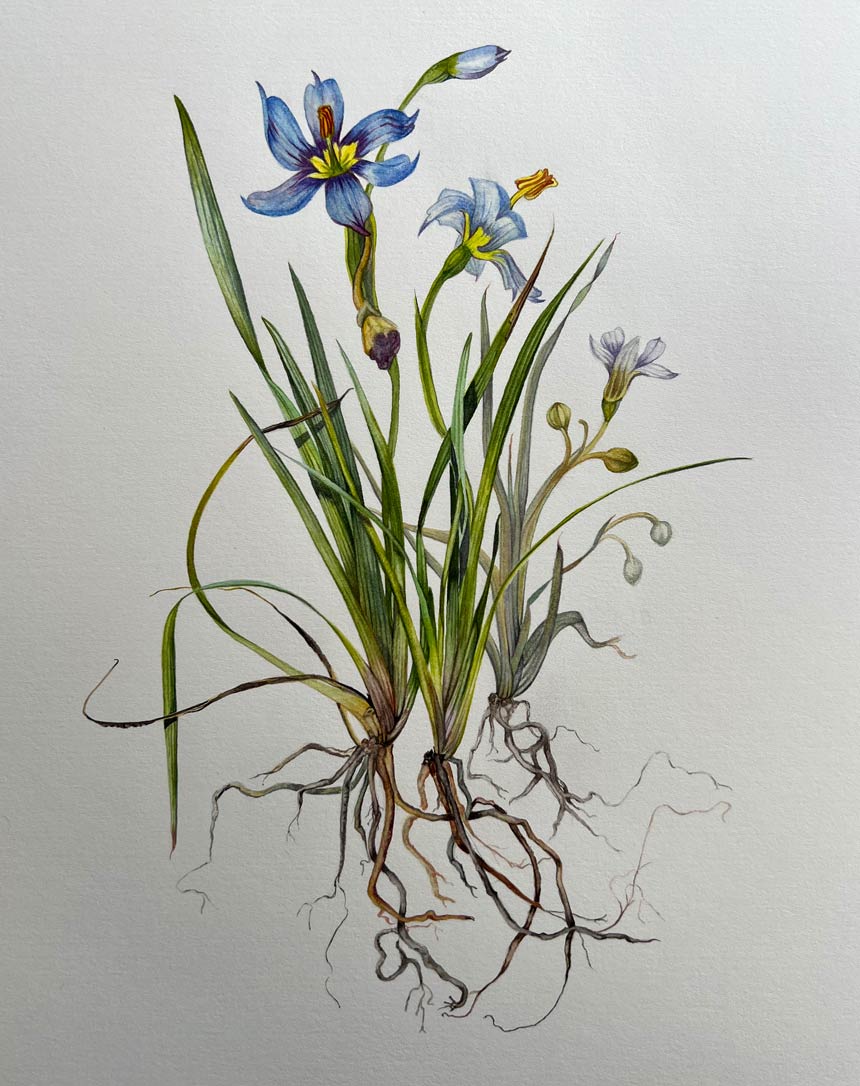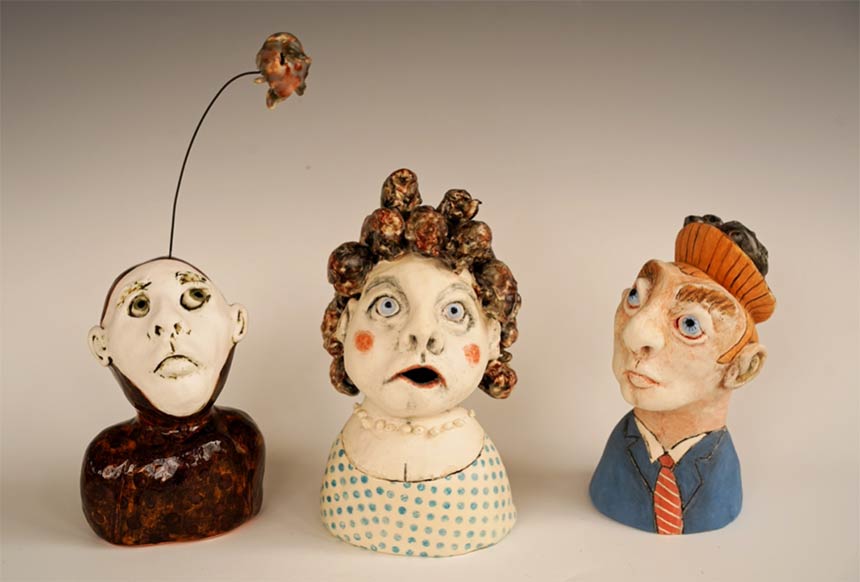Early this spring I came upon these marsh grasses and loved how they danced in…

Four years ago, I was gifted large boxes of French Tinfix dyes. I knew that before I used these rare, no longer produced dyes I must ask innumerable questions on Facebook International’s Silk Painters site. A Master Silk Painter started to answer my questions about many different topics: bases, printing on silk, different techniques, and how to sew rolled edges.. In 3 years of weekly chats, the man I was learning from has become a friend who helps me resolve many current project difficulties, as well as how I can correct errant mistakes.
It can be quite a complicated process. Here are the major stages my silk paintings go through:

- First I select custom PVC stretchers for 3 different sizes of silks: 45 x 45”, 25 x 25”, 15 x 70”. Four silks are usually worked at the same time. Individual palettes are on separate carts.
- Next I create a design to give me an idea of how I want the finished silk to appear. This includes my ideas about the palette I want to use. I keep all these drawings in a folder on my computer so I can reference and refine the many designs I have created later.
- After this I begin drawing a “sketch” on an acetate copy and that becomes my guide for under drawing on silk with pencil.
- Before I can start layering I must stretch my silk on to the frames so that my
resists line work can begin. - I first paint gray shadows are wet on wet.
- Then I trace clean resists lines using colored resisted and clear solvent base gutta.
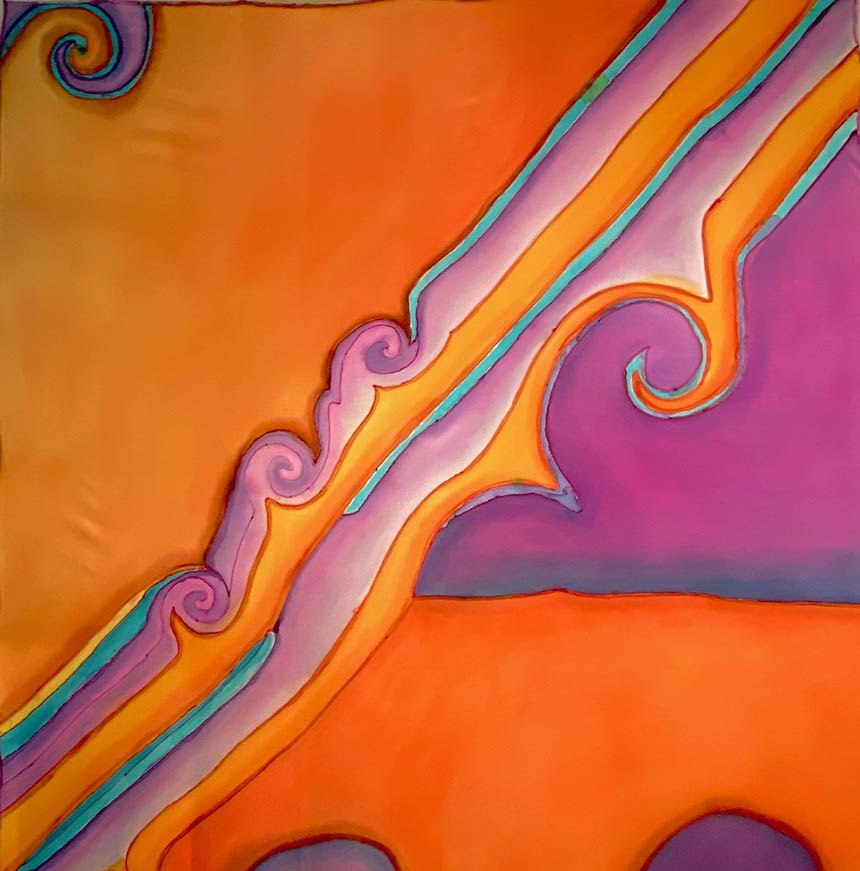
Note:
Working color WET INTO WET: water/alcohol 50:50 mix is painted over selected area. It must be kept 1-2mm away from the lines to prevent diffusion of color. Total area must be kept wet while applying the color in circular strokes to blend evenly. You do not want to overload a brush with color.
- Once all colors are in place, I remove from stretcher. I iron the silk face down on news print. Then it is rolled up and inserted into a standing steamer to be steamed for 2.5 hours. After which I unroll, wash and iron the silk again checking for any corrections which might need to be made. If there are none, I prep for how I wish to hang the piece.
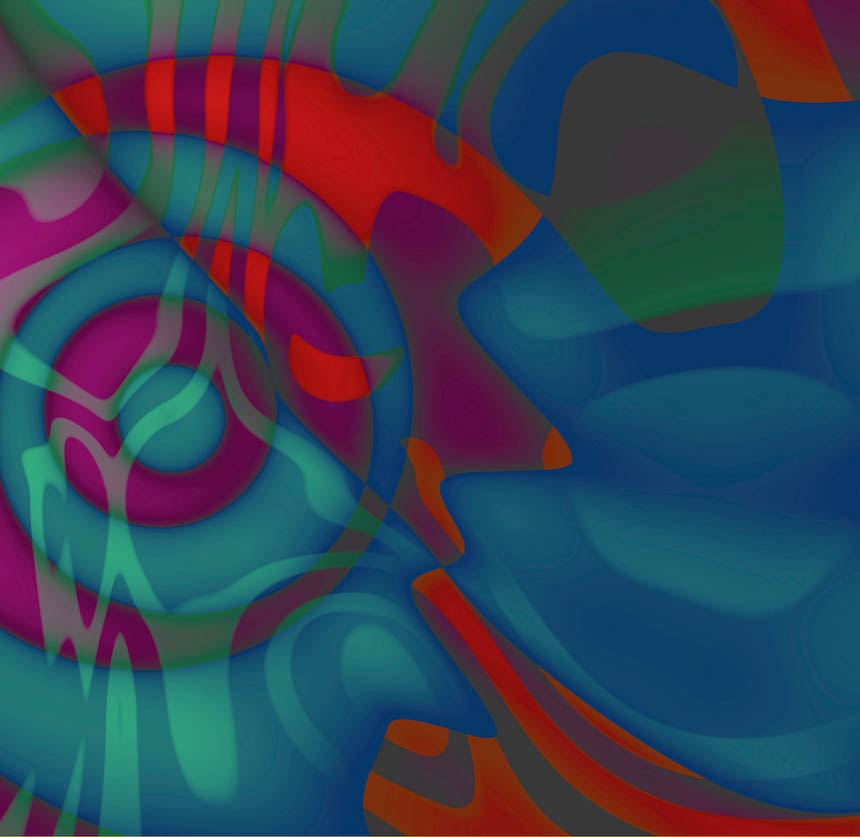
My friend is always telling me to “go slow and be patient”. It is better to make a swatch piece to test out different techniques used and the color palette before beginning the actual piece. I have found that this form of painting is probably the most difficult there is and even makes stone lithography look easy.
Following this new muse keeps my mind young and my body working. I want my paintings to talk not only to me but to you. In doing this, they will brighten both our lives.

